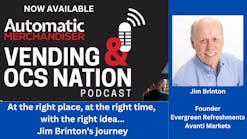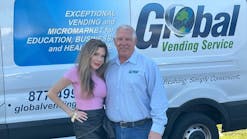As many vending operators know, there is always the possibility for a surprise visit from the Occupational Safety and Health Administration (OSHA). OSHA is the federal agency charged with the enforcement of safety and health legislation, explained attorneys Heather Bailey and Jon Hoag of the SmithAmundsen law firm at the 2016 NAMA OneShow held in Chicago, IL.
Although OSHA visits can be unexpected, they don’t have to be stressful if a vending company has prepared a well thought-out plan 'just in case'. Bailey and Hoag gave operators at their OneShow educational session six ways to prepare for and manage the situation in the event OSHA inspectors come knocking on the door.
1: Know the process
The best way to manage the process is to know the process, explained Hoag. First OSHA will have an opening conference at a vending operation, followed by a walk-around to look into any safety or health issues. OSHA will request documents and have a closing conference where they may issue citations. "Afterwards there could be an informal settlement conference and the ability to contest citations," Hoag said.
2: Ask why OSHA is there
After OSHA shows up at your business and the opening conference begins, Hoag recommends asking the inspector for the inciting incident/reason for their visit. "It could be that a former employee is retaliating, but you won’t know until you ask," said Hoag, "First and foremost during this process, you need to be courteous but cautious."
3: Assemble a team
Prior to an OSHA visit, operators should have a team prepared, that way when OSHA does arrive, the operator can request time to assemble the team together, including keying in the attorney to the visit. An attorney would be able to advise which documents to hand over and provide key advice to ensure the process goes smoothly. The attorney may also be able to be present for the inspection.
4: Ask questions
During the walk-around portion of the OSHA visit Hoag cautions, “Do not let the inspector walk around by him or herself. Stay with them at all times.” OSHA inspectors can cite companies for violations outside of the reason that gave rise to the first claim and more inspectors will expand the inspection to include other areas of the business, if allowed to wander. Hoag recommends asking as many questions as possible during the inspection, in order to learn what the inspector is seeing and penalizing.
5: Keep records
OSHA will ask for documents, Hoag continued, “It’s important that you have your counsel look at what you’d turn over if the inspector was at your door. Sometimes you don’t need to hand over as much as you think you do.” Hoag recommends keeping five years of records, including records of annual staff safety meetings, who attends the meetings and signatures of employees stating they understand the safety updates, etc. “You should also mark down employee-caused issues that arise as a form of backup,” he said.
6: Know what’s next
After the inspection the OSHA inspector and the vending operator will have a closing conference where citations will be given (if any). “Always go to the informal settlement conference,” suggested Hoag. “There you can negotiate.”
Knowing OSHA procedures will help operators better prepare for the day an inspector shows up.

Adrienne Klein | Contributing Editor
Adrienne Zimmer Klein is a freelance writer with a background in the vending, micro market and office coffee service industry. She worked as an associate editor and managing editor at Automatic Merchandiser and VendingMarketWatch.com from 2013 until 2017. She is a regular contributing writer at Automatic Merchandiser.





